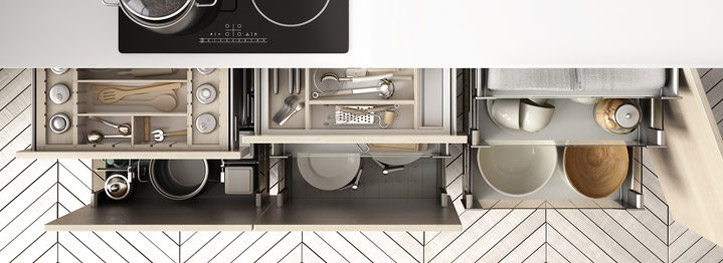
Your home, if anything like the average, contains hundreds of thousands of individual items and possessions. While you may like to think your “crap” is all useful and systematically organized, the reality is that it’s a mess. Very few items have a permanent resting place, and most of the stuff you own is pretty useless. And when you look at the house as a whole, specific rooms are worse than others.
Before we dig into how you can bring order to the chaos that is your home, let’s make sure we understand the why behind organizing your home.
Every home has its own hot spots of disorganization, but when you study the areas that commonly plague Americans of all socioeconomic backgrounds, it becomes apparent that certain rooms are more problematic than others. In particular, the following three spaces stand out as needing the most attention:
According to one study, nearly one out of every four Americans says their garage is too cluttered to fit their car. In other words, the average household has so much junk that they can’t even pull their vehicle into the space that’s designed to protected it
The garage is sort of the catchall for junk in the house. You put items in the garage and pretend that you’ll get to them later, when you really know that they’re just being placed there to sit for six or nine months.
If you want to maintain a more organized home, it all starts with the garage. If you can get this room squared away, you’ll have the motivation to infiltrate other areas.
The best piece of advice is to segment the garage into zones and to implement storage and organization techniques for each zone. Examples of zones include: car supplies, tools, trash and recycling, sports equipment, and landscaping supplies.
Once you have zones established, think in terms of vertical storage. How can you store items in an upward manner so that you still have room to walk around and park on the floor? Find a system that works for you and stick with it.
The next problem spot – the kitchen – is just a short walk from the garage. As one of the most heavily used rooms in the home, it’s no wonder that it gets cluttered fairly quickly. However, it’s also unfortunate. The less organized the kitchen is, the more challenging it is to find the items you need and cook healthy meals.
Within the kitchen itself, the pantry is the most neglected space. Much like the garage, the fastest way to tackle this area is through segmentation.
“Divide your pantry in zones to keep your food organized and to reduce your meal-preparation time,” Better Homes & Gardens advises. “First, identify food and cooking categories that suit your lifestyle (weeknight dinners, portable lunches, baking, etc.) Next, designate an area for each, with the most often-used zones in easy reach. Finally, label each zone.”
It’s also a good idea to have a system for keeping food fresh. Instead of keeping food items in their original packaging – which is rarely designed for long-term storage – switch the remaining food to glass jars with tight seals. Not only does this maintain freshness, but it also allows you to see exactly what you have left.
The third most disorganized room in the average home is the closet(s). Much like the garage, this is a black hole where junk gets tossed and forgotten about. Once you come to terms with this, you can focus on developing a better system of organization.
“Over time, the temptation to stuff something like a box of appetizer plates in a bedroom closet or extra towels for the bathroom in the entry closet can cause you to make some bad storage decisions,” HGTV acknowledges. “This is the time to return out-of-place items to their rightful home.”
Once you’ve removed items that don’t belong in the closet, you can follow the method used in each of the other problem areas and create different zones for organization. If it’s a bedroom closet, having designated spaces for shoes, shorts, pants, shirts, belts, socks, etc. will prevent you from just tossing items in and shutting the door. It forces you to take the time to put each item in a specific place, which also cuts down on the likelihood of introducing items that don’t belong.
Depending on how much space you have in your closet and exactly what’s being stored, you may want to invest in a professional closet organization system. While a bit on the costly side, they do help.
When it comes time to sell, don’t throw all of your hard earned equity down the drain. While most traditional listing agents charge a standard 3 percent commission, Green Residential works on a flat rate fee that saves our clients thousands of dollars at closing. For more information on how we can help you sell your Houston home, please contact us today!
